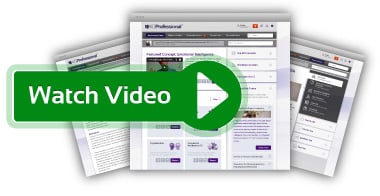Linear Trend Forecasting
Linear trends show steady, straight-line increases or decreases where the trend-line can go up or down and the angle may be steep or shallow. The concept describes the purposes and uses of linear trend forecasting and the main ingredients necessary for implementation of this forecasting procedure.
Technique Overview
Linear Trend Forecasting Definition
Linear trend forecasting is used to impose a line of best fit to time series historical data (Harvey, 1989; McGuigan et al., 2011). It is a simplistic forecasting technique that can be used to predict demand (McGuigan et al., 2011), and is an example of a time series forecasting model.
Linear Trend Forecasting Description *
* The full technique overview will be available soon. Contact us to register your interest in our business management platform, and learn all about Linear Trend Forecasting.
Business Evidence
Strengths, weaknesses and examples of Linear Trend Forecasting *
* The business evidence section is for premium members only. Please contact us about accessing the Business Evidence.
Business Application
Implementation, success factors and measures of Linear Trend Forecasting *
* The business application section is for premium members only. Please contact us about accessing the Business application.
Professional Tools
Linear Trend Forecasting videos and downloads *
* The professional tools section is for premium members only. Please contact us about accessing the professional tools.
Further Reading
Linear Trend Forecasting web and print resources *
Linear Trend Forecasting references (4 of up to 20) *
- Boyer, K. and Verma, R. (2010) Operations and Supply Chain Management for the 21st Century. Cengage, Mason, OH.
- Datta, S., Granger, C. W.J., Graham, D.P., Sagar, N., Doody, P., Slone, R. and Hilmola, O.-P. (2008) Forecasting and Risk Analysis in Supply Chain Management. MIT Forum for Supply Chain Innovation, ESD-CEE, School of Engineering.
- Doganis, P., Alexandridis, A., Patrinos, P. and Sarimvei, H. (2006) Time Series Sales Forecasting for Short Shelf-life Food Products Based on Artificial Neural Networks and Evolutionary Computing. Journal of Food Engineering, Vol. 75, pp. 196-204.
- Engineering Statistics Handbook (2010) Time Series Analysis. NIST/SEMATECH, National Institute of Standards and Technology, US Department of Commerce.
* The further reading section is for premium members only. Please contact us about accessing the further reading.
Learn more about KnowledgeBrief Manage and how you can equip yourself with the knowledge to succeed on Linear Trend Forecasting and hundreds of other essential business management techniques

